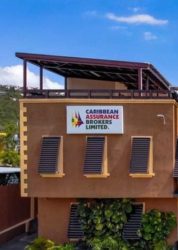Dolla Financial reported record profit for the 2023 first quarter that jumped 90 percent to $125 million before tax, from just $66 million last year, with aftertax profit coming in at $123 million, 128 percent higher than the $59 million reported for 2022, but the company is not satisfied, with that and plans increased borrowing to on lend and acquisition while having eyes on branch expansion.
 The company borrowed $1.17 million in 2022 but used most of the available funds on hand at the start of the year, with loans granted to borrowers absorbing $550 million in the March quarter, leaving the company with just $117 million in cash funds. In order to maintain the current profit momentum the company will need to add new loans from lenders to keep funding the expansion.
The company borrowed $1.17 million in 2022 but used most of the available funds on hand at the start of the year, with loans granted to borrowers absorbing $550 million in the March quarter, leaving the company with just $117 million in cash funds. In order to maintain the current profit momentum the company will need to add new loans from lenders to keep funding the expansion.
In an investor briefing, the CEO Kadeem Mairs indicated that they are in the process of negotiating a US$7 million loan that will be used to fund loan expansion and acquisition that they are currently looking at. Such acquisitions will be subject to regulatory approval before they will be able to complete such transactions.
The company is also seeking to establish an 800 square foot branch in May Pen in the complex that houses the supermarket operated by Derrimon Trading.
Importantly, Mairs pointed out that 80 percent of loans granted are secured and therefore result in a low credit default.
IC Insider.com forecast is for the 2023 earnings per share to be 40 cents and is partially predicated on timely loan funding.
More expansion coming for Dolla Financial
Profit surges at Dolla
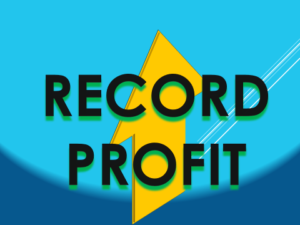 Profit at Dolla Financial for the 2023 first quarter jumped 90 percent to $125 million before tax of $1.9 million from just $66 million last year, with aftertax profit coming in at $123 million, 128 percent higher than the $59 million in 2022, the robust outcome flowed from total income of $310 million up 110 percent over $141 million in 2022.
Profit at Dolla Financial for the 2023 first quarter jumped 90 percent to $125 million before tax of $1.9 million from just $66 million last year, with aftertax profit coming in at $123 million, 128 percent higher than the $59 million in 2022, the robust outcome flowed from total income of $310 million up 110 percent over $141 million in 2022.
The revenue grew from a 161 percent increase in loans to customers of $2.3 billion from $870 million at the end of March 2022. The company lent out nearly $550 million in the March 2023 quarter.
Administrative expenses jumped by 110 percent to $124 million from $59 million in 2022, while Interest expense surged 285 percent to $50 million from just $13 million in 2022 following increased loan funding of $1.6 billion by 232 percent from $481 million at the end of March last year.
 Profit for 2023 equates to 6 cents in earnings per share. ICInsider.com is forecasting 40 cents per share for the year, partially on the assumption that there will be an increase in loan funding to facilitate increased lending to customers and maintain the rapid loan expansion. This is likely to push the stock into the $8 region. However, the PE ratio is 7 times current year’s earnings, with the stock price at $2.79 that it traded at on the Junior Market on Wednesday. With no additional loan funding, profits should end the year at 35 cents per share or just under $900 million.
Profit for 2023 equates to 6 cents in earnings per share. ICInsider.com is forecasting 40 cents per share for the year, partially on the assumption that there will be an increase in loan funding to facilitate increased lending to customers and maintain the rapid loan expansion. This is likely to push the stock into the $8 region. However, the PE ratio is 7 times current year’s earnings, with the stock price at $2.79 that it traded at on the Junior Market on Wednesday. With no additional loan funding, profits should end the year at 35 cents per share or just under $900 million.
Profit for the quarter pushed shareholders’ equity to $794 million.
Revenues & profit explode at Image Plus
Revenue and profits surged solidly for the most recently Junior Market listed Image Plus Consultants for the financial year ended February 2023, with revenue jumping a robust 40.7 percent to a record $1.094 billion, up from $777 million in 2022 but, with a slower pace of 33 percent in the final quarter of $290 million compared with $218 million in 2022 as the company that specializes in diagnostic services delivered a convincing 123 percent growth in Profit before Tax to $252 million, up from $113 million in 2022.
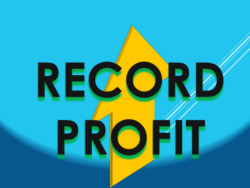 Profit after tax jumped 139 percent to $236 million over the $94 million generated in 2022. Results equated to earnings per share of 23 cents up from 9 cents in 2022. ICInsider.com revised earnings for the current fiscal year to 40 cents from 30 cents previously and 85 cents for the fiscal year ending February 2025.
Profit after tax jumped 139 percent to $236 million over the $94 million generated in 2022. Results equated to earnings per share of 23 cents up from 9 cents in 2022. ICInsider.com revised earnings for the current fiscal year to 40 cents from 30 cents previously and 85 cents for the fiscal year ending February 2025.
Revenue was driven by the growth in case count of 54,840, an increase of 8,469 cases or 18.3 percent over the 2022 financial year, the company advised shareholders in a release accompanying the financials.
Gross profit jumped 39 percent to $716 million from $505 million in the previous year as the company maintained a 39 percent cost of sales for a second year.
Administrative expenses rose 14 percent to $417 million from $365 in 2022, depreciation charge climbed to $43 million versus $36 million in 2022 and finance costs remained almost flat at $7 million.
Current liabilities stood at $138 million, Shareholders’ equity grew from $267 million to $945 million, helped by an infusion of $465 million in proceeds from the IPO earlier in 2023 coupled with the growth of $213 million in the year’s profit. Long term liabilities amount to $75 million, with current loans amounting to $39 million. Cash and investment funds totalled $492 million and helped to swell Current assets to $811 million from just $223 million at the end of the fiscal year 2022.

Dr. Karlene McDonnough – Chairman of Image Consultants Ltd.
Cash flow generated $271 million, but working capital absorbed $83 million as receivables Increased by $159 million due partially to greater business activity. Addition to fixed assets consumed $152 million, with Lab equipment taking $104 million and leasehold improvement $43 million.
According to management, “a new fluoroscopy unit was acquired for our Winchester location and the relocation of our Ocho Rios operations to a larger space in White River North Commercial Complex in Q3 drove growth in leasehold improvements. The significant increase in patient scan volumes resulted in a growth of $159 million in trade receivables. Management continues to actively manage these receivables and written commitments have been received from the largest payer, which gives us confidence that these receivables will continue to be honoured.”
The company incurred income tax on profit for ten months of the financial year 2023 before listing and will enjoy five years tax free status as JSE Junior Market listed company.
The stock, around $2, is attractive and can potentially deliver good returns for investors at the current price. Investors could benefit from cash dividends as the directors will meet this month to consider a dividend payment.
Transjamaican breakout
Transjamaican Highway (TJH) reported record revenues of $65 million for 2022, up 12.3 percent from $52.76 million generated in 2021, resulting in profit of $9.3 million before the one off cost, up a solid 74 percent above the $5.34 million generated in 2021.

The company reported a loss of US$7 million for 2022 after tax and after factoring in a onetime loss of US$13.7 million resulting from the acquisition of the major share of Jamaica Infrastructure Operators, the loss compares with a profit of $4 million in the previous year.
The above acquisition “will result in future cost savings, expected to significantly reduce Operating Expenses by more than 50 percent or US$12 million per annum and increase our profitability,” the directors informed shareholders in their commentary on the results. ICInsider.com projects earnings of 0.016 US cents per share or J$0.24, giving it a PE of 7 and a target price of J$4.50.
In addition, it is worth noting that the vast majority of costs are more or less fixed, with Amortization of intangible assets amounting to $13.7 million, up from $12.3 in 2021, finance cost slipped slowly to $14.7 million in 2022 from $15.3 million in 2021. Operators fixed fees amounted to $17.7 million, up from $16.4 million but will drop in 2022, now that TJH owns the operating company. The company has been selected as the operator for the May Pen to Mandeville leg of Highway 2000, which will add to future revenues and profits.
In their commentary of the full year results, the company directors stated that “traffic since the advent of Covid19 has fully recovered and was approximately 7 percent above our 2019 pre-covid levels and 13 percent above the 2021 traffic”.
Gross cash flow brought in $10 million but with growth in receivables, inventories, addition to fixed assets offset by loan payment of $6.6 million, increased payables and paying $7 million dividends, the company ended with a net outflow of $1.3 million and closed with $5.4 million in cash funds.
At the end of December, shareholders’ equity stood at $40 billion or $3.20 per share—long term borrowings at $224 million and short term at $10 million. Current assets ended the period at $6.3 million, which comprises mostly the above cash and bank balance. Current liabilities ended the period at $16.5 million. Net current assets ended with a negative amount of $10 million.
All amounts are in US dollars unless otherwise stated.
Consolidated Bakeries turnaround
Consolidated Bakeries seems to be on the mend, with 2023 looking like the year it finally comes into its own having posted the first full year profit in 2022, the first since 2018, with sales exceeding the billion mark for a second consecutive year and the third time in four years.

Anthony Chang, Managing Director of Consolidated Bakeries
Purity, a name the company is also well known by, reported profit in three of the four quarters last year with profit in the first two quarters as well as in the December 2022 quarter but reported a $14.5 million loss in the third quarter even with revenues in that quarter being the same as the final quarter at $323 million.
The improved 2022 profit performance evolved from a 26.5 percent rise in revenues to $1.37 billion for the full year above the $1.079 billion in 2021 with profit after taxation coming in at $14 million compared to an $18 million loss in 2021. Pretax profit was even more impressive being $17.7 million versus a loss of $21.7 million in 2021 resulting in a $38 million turnaround.
The improved results show up in a strongly transformed financial position resulting in an enhanced working capital position even as sales surged, with a buildup of cash and reduction in borrowed funds.
Revenues climbed 30 percent in the March quarter, from $291 million last year, to $378 million and rose a stronger 42 percent in the June quarter to $342 million from $241 million in 2021. At the same time gross profit margin that tends to hover around 39 percent rose to 42 percent in the second quarter, from 38 percent in 2021. For the six months, revenues were up 35 percent to $720 million from $532 million in 2021 while gross profit rose 41 percent to $292 from $207 million. The Easter period provides added revenues for the company, resulting in the first half of the year producing higher revenues and profit than the second half.
In the first quarter, profit before tax rose 61 percent to $14.5 in 2022, from $9 million last year and is up 200 percent in the second quarter to $13.5 from a loss of $13.4 in 2021. For the half year pretax profit surged 735 percent to $28 million from a $4.4 million loss in 2021.
The company generated a gain on other comprehensive income from investments of $783,279 for 2022 and $6.3 million for 2021.
Administrative and other expenses rose by just 6 percent to $266 million from $250 million in 2021. Selling and Distribution expenses increased by a robust 33.4 percent to $203.4 million in 2022 over that of 2021 with $152.5 million. Depreciation rose 8 percent to $35.6 million from $33 million in 2021. Finance cost jumped sharply to $16.3 million from $11.7 million in 2021.
The company’s finances are looking much better in 2022 than in 2021. Operations for the half year generated gross cash flow from operations of $118 million after changes in working capital, allowing it to fund the acquisition of fixed assets amounting to $63 million to end the year with an increase in cash of $57 million.

Consolidated Bakeries Miss Birdie Easter bun.
Shareholders’ equity stood at $697 million, while Long term borrowings ended the period at $136 million and short term loans at $51 million, representing a $47 million reduction from December 2021 and resulting in cash and bank balances and investments rising to $99 million, from $90 million at the end of December 2021. Current assets ended the period at $293 million, with trade and other receivables standing at $115 million, compared to $110 million in 2021. Inventories rose moderately to $79 million from $67 million in 2021. Current liabilities ended at $237 million, up from $175 million at the end of December 2021 and net current assets ended at $56 million compared with $93 million at the end of the previous year.
In the past the big concern was the ability of the company to hold on to the profit made in the first six months in the second half of the year, this changed in 2022 as revenues benefitted from increased volume sales as the company made headways into new areas as well as some new products. In an interview with Managing Director, Anthony Chang in 2022, he stated that while new products helped sales, in some cases traditional products found new takers in areas of the country where demand was not as strong in the past. Chang also stated that they are now benefiting from some changes made in personnel that is delivering improved results, he also indicated expansion of the distribution channel into smaller stores while consolidating business in the bigger stores. They also placed focus on cost by employing a cost accountant.
Retooling played an important role in the gains but Chang say this is a work in progress. According to him, bread at one stage in the past accounted for 90 percent of sales, was in direct competition with the market leader and had low profit margin, but it took time to make the shift as new machinery was needed to effect the change to new products, that needed machinery for packaging these products. The company has been adding to fixed assets as a part of the drive to have the right machines and in the quantity required to churn out new products.
Based on the above ICInsider.com projects this year’s earnings per share of 40 cents and 75 cents for 2024 with the company benefitting from full recovery of the local economy and increased efficiency and reduction in interest cost as borrowings decline.
The company has a net book value of $3.07. If achieved, the PE ratio currently would be 6.3, based on the price of $2.50 the stock traded at on the Jamaica Stock Exchange Junior Market on Friday.
Half year profit jumps 122% at One on One
ONE on ONE Educational led trading with 1.93 million shares for 33.2 percent of total volume, on Monday up from just 374,488 shares being traded on Friday, following the release of half year’s results, showing increased revenues of 47 percent to $153 million from $104 million in 2022 while the second quarter revenues rose more slowly at 17.5 percent to $72.6 million from $61.8 million.
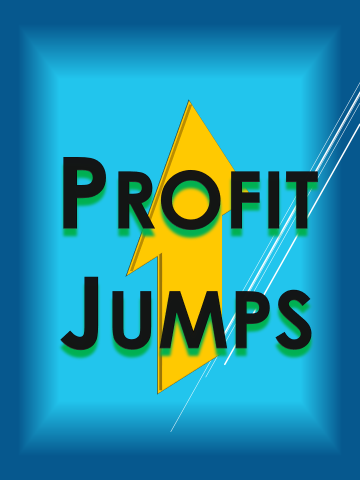 Profit before tax jumped 122 percent in the half year to $19.7 million from $8.9 million in 2022, but with slightly lower profits in the second quarter of $7.4 million compared with $14.6 million in 2022 as administrative costs jumped much faster than revenues by 51.6 percent in the quarter to $47 million from $31 million in 2022 and 54 percent for the half year from $60 million to $92 million.
Profit before tax jumped 122 percent in the half year to $19.7 million from $8.9 million in 2022, but with slightly lower profits in the second quarter of $7.4 million compared with $14.6 million in 2022 as administrative costs jumped much faster than revenues by 51.6 percent in the quarter to $47 million from $31 million in 2022 and 54 percent for the half year from $60 million to $92 million.
Helping with the results was a fall in direct cost that fell 27 percent from $16.3 million to $11.85 in the first quarter and a fall from $28.7 million to $26.8 million for the six months. Gross profit jumped 33.6 percent in the second quarter to $60.7 million from $45.5 million and jumped 68 percent from $75.5 million in the half year to $126.7 million.
Selling expenses climbed from $3.3 million in the quarter to $9 million and from $6.5 million in the half year to $17.7 million in 2023. Finance cost fell to $873,172 in the second quarter down from$3.9 million in 2022 and fell from $6 million for the 2022 half year to $2.4 million in 2023.
Earnings per share amounts to 0.9 cents for the half year. the company ended with cash funds at $185 million, up from the $45 million in February 2022. Receivables spiked to $144 million, representing almost 6 months of sales revenue, up from $88 million at the end of August 2022.
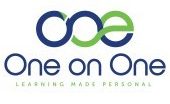 The company provided a Q3 Outlook: “as we move into Q3, we are optimistic about the growth and opportunities across all our divisions. The launch of OneAcademy and the continued expansion of our government and business divisions will drive our performance in Q3. Additionally, our investments in people, systems, content development, and AI will continue to yield results as we position One on One as a regional and global leader in the Ed-Tech space.”
The company provided a Q3 Outlook: “as we move into Q3, we are optimistic about the growth and opportunities across all our divisions. The launch of OneAcademy and the continued expansion of our government and business divisions will drive our performance in Q3. Additionally, our investments in people, systems, content development, and AI will continue to yield results as we position One on One as a regional and global leader in the Ed-Tech space.”
Trading in the stock continues to be healthy with 1.17 million shares on Tuesday, with the last traded price at $1.15 after trading up to $1.19, with bids to buy 1.26 million at $1.15 and 460,888 on offer at $1.17.
Solid profit from concrete growth
Profit at Jamaica’s sole cement producer, Caribbean Cement Company was flat in the December quarter last year, with $1.48 billion earned compared with $1.5 billion in 2021, profit for the full year to December rose a solid 24 percent to a record $5.4 billion from $4.34 million in 2021.
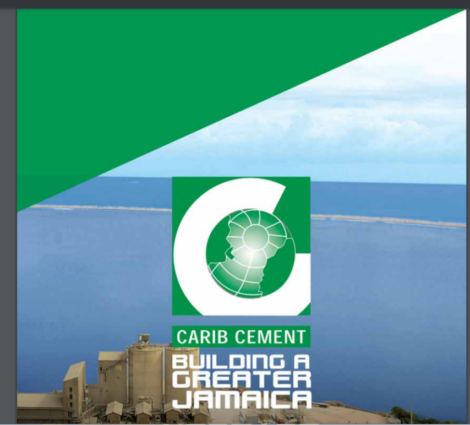 The improved full year results flowed from an 8.4 percent rise in sales revenue to $25.8 billion, from $23.84 in 2021. Revenues were almost flat for the December quarter at $6.15 billion against $6.04 billion in 2021.
The improved full year results flowed from an 8.4 percent rise in sales revenue to $25.8 billion, from $23.84 in 2021. Revenues were almost flat for the December quarter at $6.15 billion against $6.04 billion in 2021.
There was a notable improvement in gross profit margin that increased to 44 percent from 41 percent in 2021 as cost of sales rose by a mere 3.3 percent to $14.5 billion from $14 billion in 2021 that includes depreciation of $1.4 billion, down from $1.45 billion in 2021 and fuel and electricity that surged 37 percent from $4.1 billion, to $5.6 billion in 2022. The net effect is that Gross profit rose 15.5 percent for the year, to $11.36 billion from $9.8 billion in 2021. The moderate rise in direct cost, “was mainly attributable to the company’s decision not to undertake its planned major maintenance during the third quarter, compared to 2021,” the company stated in the release containing the results.
Administrative expenses rose close to the rise in revenues by 14 percent to $942 million in the year from $827 million while Selling Distribution and logistics expenses rose just 4 percent to $1.74 billion from $1.67 in 2021. Included in the administrative expenses are Management fees of $200 million, up slightly from $195 million in 2021 and royalty fees of $475 million with none in 2021 and write off of $120 million for non-recoverable GCT costs with none in 2021. Personnel remuneration and benefits amounted to $2.64 billion during the year, up from $2.5 billion in 2021, but actual salaries and wages were modestly lower at $1.97 billion versus $1.98 billion in 2021.
Finance cost declined in the year to $581 million from $671 million in 2021, which include a charge of $402 million during the year and $376 million for 2021 for unwinding discount on the redemption of the preference shares. The company has fully liq uidated the debt and there should be no charge in 2023 for this item
Gross cash flow generated from operations amounted to $8.8 million and was reduced by increased working capital of $5 billion to $3.8 billion. The net cash flow provided funding for the acquisition of fixed assets costing $1.26 billion, the payment of $1.26 billion in dividends. They also paid off the balance of $1.84 billion due on preference shares to Trinidad Cement.
At the end of December, shareholders’ equity stood at $20 billion with long term borrowings at a mere $608 million.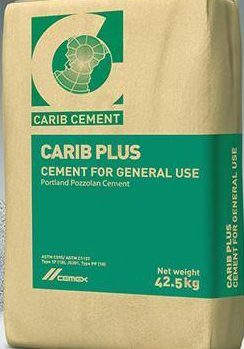
Current assets ended the period at $7.1 billion, up from $4.3 billion in 2021 including trade and other receivables of $650 million, cash and bank balances of $575 million with $5.48 billion of inventories up from $3.44 billion in 2021. Current liabilities ended the period at $6.1 billion, down from $8.5 billion in 2021. Net current assets ended the period at $1.1 billion.
Earnings per share came in at $6.33 when compared to $5.10 in 2021. IC Insider.com forecasts $7.50 per share for the fiscal year, with a PE of 7.7 times current year’s earnings based on the price of $57.50 the stock traded at recently on the Jamaica Stock Exchange Main Market with a net asset value of $23.54 and 2.5 times book value.
The company paid a dividend of $1.53 cents for the first time in 17 years in September last year.
This cost incurred for the unwinding of the discount for the repayment of the preference shares will not recur in 2023 also the write off of non-recoverable GCT cost, countering these savings will be the annual major maintenance that was not incurred in 2022, at the same time Fuel and electricity cost should fall from the Ukraine war induced spike in worldwide oil prices that has since moderated form the peak of more than US$120 per barrel to around $80 currently.
The company outlook was summarized by management, “we will ensure that our operations remain resilient by employing sound cost management strategies in this challenging economic environment.
Additionally, we expect to have a similar or better level of productivity and efficiency of the kiln in the future on completion of our planned major maintenance in 2023. During the previous quarter, the groundbreaking of our major kiln expansion project took place. This important investment will improve the self-sufficiency of the industry in Jamaica to comfortably meet growing demand, while setting the foundation to supply other export markets, effectively strengthening the external sector of our economy and essentially the country’s growth.”
The above expansion plan projected to increase the plant capacity by up to 30 percent should be completed by the second half of 2024 and will lower the unit cost of producing cement if it leads to a sufficient increase in sales volume. That won’t take place until 2025.
The stock is selling at a discount to its normal value but seems to weight down by higher interest rates and a slowdown in activity in the construction sector, but all signs point to lower interest rates in the second half of the year and continuing for a while, as such these negative factors will soon pass. With the expansion to come on stream in 2024, the stock remains a good long term buy.
Supreme increased profits
Profits jumped 32 percent to $3 billion from a 15.6 percent jump in revenues to $50.77 billion at Jamaica’s leading gaming company, Supreme Ventures, for 2022 over 2021, following a virtual stagnation in profits since 2019.

Supreme Ventures moved up from $24.25 at the end of last week to over $30.50 after the results.
Gross profit rose 20 percent to $11.3 billion, from $9.38 billion in 2021, as direct cost climbed slower than revenues, with a 14.4 percent increase in direct cost to $39.6 billion from $34.6 billion in 2021.
Selling, general and administrative expenses increased by 13 percent to $7 billion from $6.2 billion in 2021 and finance cost jumped to $535 million from just $30 million in 2021 was reduced by $374 million foreign exchange gains in 2021 compared with a loss of $82 million in 2022. Taxation fell to $781 million from $951 million in 2021, with the reduction due mainly to a credit of $203 million relating to losses at a subsidiary that was recognized in 2022.
“We have maintained our ongoing focus on managing costs”. “Our successful implementation of significant cost-saving initiatives has allowed us to continue our investment in the buildout of the company’s infrastructure,” the chairman Gary Peart advised shareholders in his update on the Group’s performance for 2022.
Segment results show the Lottery division generating a 19 percent increase in revenues to $23.6 billion and a profit of $5.1 billion compared with $19.85 billion and a segment profit of $3.28 billion in 2021. Sports Betting delivered a 20 percent rise in revenues of $14.4 billion for 2022 versus $12 billion in 2021 with a profit of $1.17 billion in 2022, up from $681 million, revenues for Pin Codes rose just 6 percent to $12.3 billion up from $11.6 billion with a profit of $333 million up from $214 million for 2021.

Gary Peart, Chairman
Current assets slipped from $7.6 billion in 2021 to $7 billion in 2022, while current liabilities climbed from $5.15 billion to $6.8 billion, primarily due to a $1.1 billion increase in prize and other liabilities owing. Shareholders’ equity rose to $4.69 billion, borrowed funding amounts to $5.8 billion due beyond a year and amounts due within a year stand at $540 million.
Earnings per share for the year amount to $1.15 is up from 87 cents in 2021, ICInsider.com projects earnings of $1.50 per share for 2023, with the price of the stock currently trading at $30, now at PE of 20 times earnings.
The Group paid four dividends of 67 cents last year, amounting to $2.45 billion, up from $2.1 billion in 2021 and just announced an interim dividend due to be paid in April of 34 cents per share, that will bring the total payment per share to $1.01 or 88 percent of profit.
The Group generated positive cash flows from operations of $3.66 billion to close 2022, with a cash and bank balance of $2.97 billion, representing a decrease from $44 billion at the end of the prior year.
“Digital innovations such as our lottery online platform SV Games, access to sports betting online through Just Bet Mobile, casino type games with Acropolis Online and horseracing through MBet are all growing mobile channels, from which we expect great things to continue. Our flagship lottery products continue to grow and the rebirth of the Instants product, “Scratchaz” has been an overwhelming success, introducing new market segments to the gaming sector. In addition, SVL has introduced the universal top up channel, “Charge Up”, which will ultimately become the source of top up for a variety of products and services from education to transportation. The SVL group’s digitization is comprehensive and its potential for growth is exponential,“ Peart informed investors.
Profit bolted 45% at Derrimon in 2023
Profit popped 45 percent higher in 2022 at Derrimon Trading Company to $580 million for shareholders, following a mere 3.8 percent rise in revenues to $18.4 billion from $17.74 billion in 2021 and following a fall in cost of sales to $13.78 billion from $14.34 billion in 2021 resulting in gross profit rising a solid 36 percent to $4.6 billion from just $3.4 billion, with profit margin climbing to 25.2 percent from just 19.2 percent in 2021.
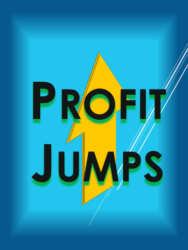 Sales revenue fell in the final quarter compared with 2021, with $4.6 billion generated in the December 2022 quarter, down from $5.6 billion in 2021, as segment data shows the wholesale and retail segment suffering a $1.8 billion decline for the year to $8.4 billion. “We took deliberate strategic steps to focus more on our retail business that has greater margins and improves cash flows,” Derrick Cotterell, Managing Director, advised ICInsder.com in response to a question about the reasons for the lower sales in the December quarter. He continued to indicate that “going forward, there will be more focus on brands with a higher margin and less on bulk products.” He said it does not mean they are getting out of the bilk products.
Sales revenue fell in the final quarter compared with 2021, with $4.6 billion generated in the December 2022 quarter, down from $5.6 billion in 2021, as segment data shows the wholesale and retail segment suffering a $1.8 billion decline for the year to $8.4 billion. “We took deliberate strategic steps to focus more on our retail business that has greater margins and improves cash flows,” Derrick Cotterell, Managing Director, advised ICInsder.com in response to a question about the reasons for the lower sales in the December quarter. He continued to indicate that “going forward, there will be more focus on brands with a higher margin and less on bulk products.” He said it does not mean they are getting out of the bilk products.
Other operating income includes rental, $82 million from a gain on acquiring a subsidiary, management fees and dividend. Debt recovery generated $237 million in 2022, up from $104 million in 2021.
Operating and administrative expenses rose 28.7 percent to $2.995 billion in 2022 from $2.33 billion in the previous year. Sales and distribution expenses increased by a hefty 71 percent to $689 million from $402 million in 2021. The shift in focusing on retail business is also based on increased borrowing costs, with interest rates having risen sharply in the country and forcing attention on improving cash flows to keep borrowings down and, by extension, interest cost. Finance costs more than doubled to $464 million from $231 million in 2021.
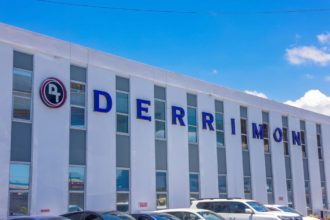 Going forward, the group will benefit from opening a supermarket in May Pen in the last quarter, which Cotterell says is doing very well.
Going forward, the group will benefit from opening a supermarket in May Pen in the last quarter, which Cotterell says is doing very well.
Gross cash flow brought in $1.25 billion, which was used to fund increased working capital of $720 million, capital expenditure amounted to $1.47 billion that was partially financed by loans inflows net of repayment of $600 million.
At the end of December, shareholders’ equity stood at $6.1 billion, with long term borrowings at $4.7 billion and short term at $476 million. Current assets ended the period at $7.3 billion inclusive of trade and other receivables of $2.2 billion, cash and bank balances of $900 million. Current liabilities ended at $4.3 billion and net current assets at $2.9 billion.
Earnings per share came out at 12.8 cents for the year, up from 9.4 cents in 2021. IC Insider.com forecasts 16 cents per share for 2023, with a PE of 14 times the current year’s earnings based on the price of $2.10, the stock traded at on the Jamaica Stock Exchange Junior Market.
The company did not pay a dividend during the year and ended with a net asset value at the end of the year at $1.22, with the stock selling at 1.73 book value.




